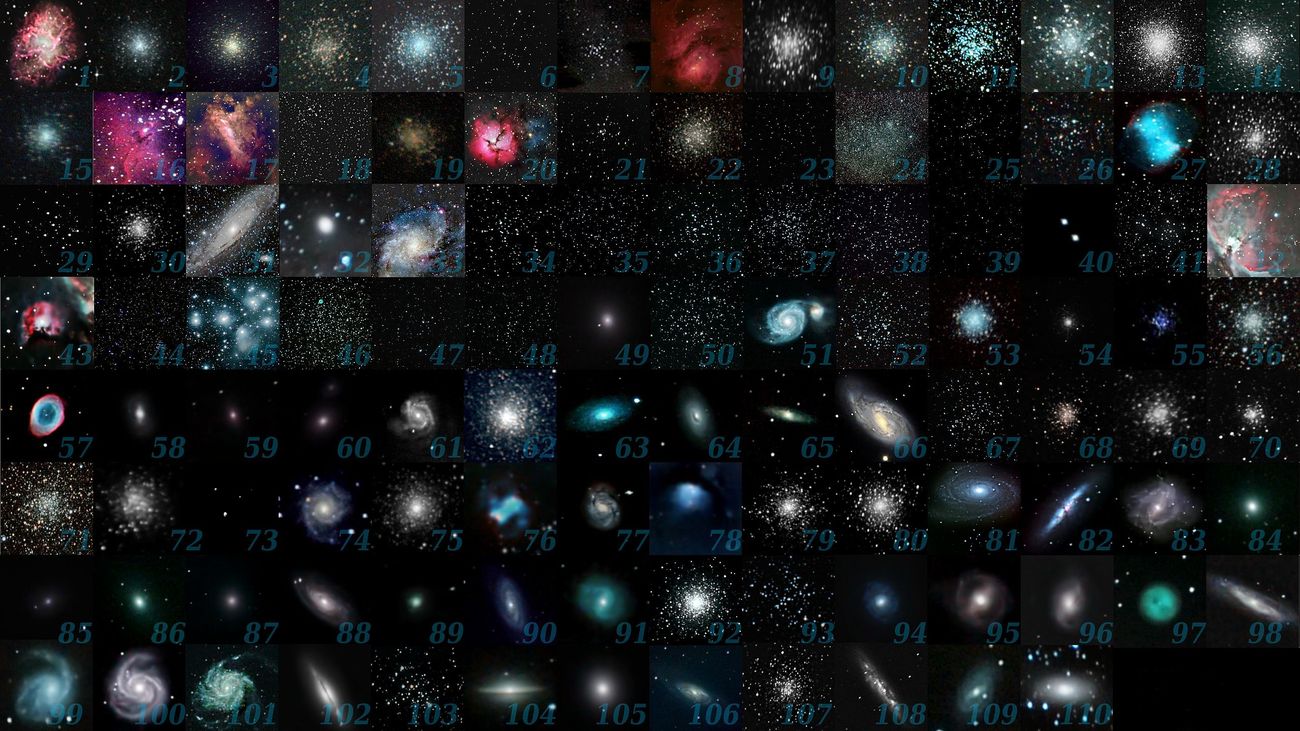
Messier Objects are a collection of 110 astronomical objects cataloged by the French astronomer Charles Messier in the 18th century. These objects include galaxies, nebulae, and star clusters, each with its own unique features and stories. But why did Messier compile this list? He wanted to help astronomers avoid confusing these fixed objects with comets. Today, Messier Objects are popular targets for amateur astronomers because they are some of the brightest and most interesting objects in the night sky. Whether you're a seasoned stargazer or just starting out, learning about these celestial wonders can add a whole new dimension to your night sky adventures. Ready to dive into the universe? Let's explore 27 fascinating facts about Messier Objects!
Key Takeaways:
- Explore the Universe with Messier Objects Discover 110 amazing celestial objects cataloged by Charles Messier, from galaxies to star clusters. They're perfect for stargazing and offer a glimpse into the mysteries of the universe.
- Messier Objects Unveil Cosmic Secrets From the Andromeda Galaxy to the Orion Nebula, these objects hold clues to the evolution of galaxies and stars. They continue to captivate astronomers and reveal the wonders of the cosmos.
What Are Messier Objects?
Messier objects are a set of astronomical objects cataloged by the French astronomer Charles Messier in the 18th century. These objects include galaxies, nebulae, and star clusters. They are popular targets for amateur astronomers due to their brightness and ease of observation.
- The Messier catalog contains 110 objects.
- Charles Messier created the catalog to help astronomers distinguish between permanent and transient objects in the sky.
- The first object in the catalog is the Crab Nebula (M1).
The History Behind Messier Objects
Understanding the history of Messier objects provides insight into the development of astronomy and the tools used by early astronomers.
- Charles Messier was born in 1730 in France.
- Messier's interest in astronomy was sparked by the Great Comet of 1744.
- The first edition of the Messier catalog was published in 1774.
- Messier used a 100mm refracting telescope to observe these objects.
Types of Messier Objects
Messier objects are diverse, including various types of celestial bodies. Each type offers unique characteristics and beauty.
- The catalog includes 40 galaxies.
- There are 29 globular clusters in the Messier catalog.
- The catalog features 27 open clusters.
- Seven planetary nebulae are listed in the Messier catalog.
- There are six diffuse nebulae in the catalog.
- The catalog includes one supernova remnant, the Crab Nebula.
Notable Messier Objects
Some Messier objects are particularly famous and have been studied extensively by astronomers.
- The Andromeda Galaxy (M31) is the closest spiral galaxy to the Milky Way.
- The Orion Nebula (M42) is one of the brightest nebulae visible to the naked eye.
- The Pleiades (M45) is an open star cluster also known as the Seven Sisters.
- The Whirlpool Galaxy (M51) is famous for its well-defined spiral structure.
- The Ring Nebula (M57) is a planetary nebula with a distinct ring shape.
Observing Messier Objects
Observing Messier objects is a popular activity among amateur astronomers. These objects are relatively easy to find and observe with small telescopes.
- Messier objects are visible from both the Northern and Southern Hemispheres.
- The best time to observe Messier objects is during the spring and autumn months.
- Many Messier objects can be seen with binoculars or small telescopes.
- The Messier Marathon is an event where astronomers attempt to observe all 110 objects in one night.
Scientific Importance of Messier Objects
Messier objects have contributed significantly to our understanding of the universe. They have been studied extensively by professional astronomers.
- The study of Messier objects has helped astronomers understand the structure and evolution of galaxies.
- Observations of Messier objects have provided insights into the life cycles of stars.
- The Hubble Space Telescope has captured detailed images of many Messier objects.
- Messier objects have been used to study dark matter and dark energy.
- The study of Messier objects continues to be an important area of research in modern astronomy.
The Cosmic Wonders of Messier Objects
Messier Objects, a collection of 110 astronomical wonders, offer a glimpse into the universe's beauty and complexity. From stunning nebulae to distant galaxies, these objects have fascinated astronomers and stargazers for centuries. Charles Messier, the French astronomer, cataloged them to help comet hunters avoid confusion. Each object, like the Crab Nebula or the Andromeda Galaxy, tells a unique story about the cosmos.
Understanding these objects enhances our appreciation of the night sky and deepens our knowledge of space. Whether you're an amateur astronomer or just curious, exploring Messier Objects can be a rewarding experience. Grab a telescope, find a dark spot, and start your journey through the stars. The universe is vast, and Messier's catalog is a perfect guide to begin your exploration. Happy stargazing!
Frequently Asked Questions
Was this page helpful?
Our commitment to delivering trustworthy and engaging content is at the heart of what we do. Each fact on our site is contributed by real users like you, bringing a wealth of diverse insights and information. To ensure the highest standards of accuracy and reliability, our dedicated editors meticulously review each submission. This process guarantees that the facts we share are not only fascinating but also credible. Trust in our commitment to quality and authenticity as you explore and learn with us.
